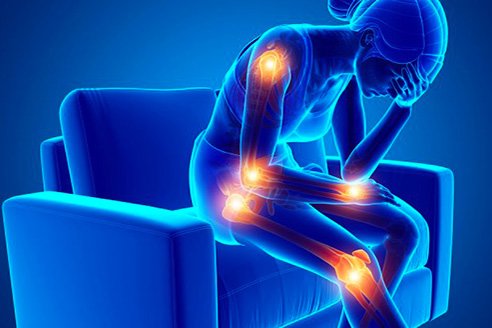Having joint pain is a fact of life for many people, from the moment they wake up to the moment they rest their heads on their pillows. Having pain in your joints may sometimes seem benign, or at least not an emergency. However, it is sometimes a sign that there is something very wrong which requires immediate medical attention.
Signs Indicating Your Joint Pain Is an Emergency
We will go over when joint pain is an emergency, so you can make sure you don’t fall into harm’s way. Here are the most common situations that point to there being a need to get medical help right away.

When There Are Signs of an Infection
The most common symptoms of joint pain include soreness and swelling. However, out of the 100 or so types of arthritis, septic arthritis is the kind that could land you in a hospital bed. This is due to a bacterial infection somewhere else in your body spreading to your joints. Besides the usual swelling and soreness, you may be unable to move your energy arm or leg. You may also get a fever or have chills. While this type of joint pain requires you to act fast, it can easily be remedied by taking antibiotics or draining fluid.
A fungus, rather than bacteria, can also cause an infection. If this is the reason for your joint pain, you will need to take anti-fungal medicine. In more extreme cases, the area that has been infected by the fungus has to be completely removed. It is dangerous to allow a fungal infection to spread, so you definitely want to act fast with this one.
The third type of infection that may cause pain in your joints is a viral one. However, unlike the first two, this type of infection will disappear on its own without any further action taken by you. With bacterial and fungal infections, if you don’t seek medical attention as soon as possible, your joints may become permanently damaged. In fact, your time window can be as short as 48 hours.
When a Sprain Has Severe Symptoms
Sprains happen all the time and are usually nothing that you have to worry about. However, when this type of injury to the ligaments in your foot is more severe than a simple overstretching of them, it becomes an emergency. Soreness, bruises, swelling, and difficulty moving joints are all commonly-occurring symptoms after someone falls and twists an ankle or wrist. However, if you see redness beyond the affected joint, feel numbness in the area, or cannot put any weight on it, seek out help right away. This is a sign that joint pain is an emergency.
When you experience any of these more severe symptoms, it could mean that you have broken some bones or ripped ligaments. A qualified medical professional will be able to tell you what is the best course of action to help you. If you put off going to see a doctor for too long, you run the risk of developing chronic pain.
When There Are Symptoms of Rheumatic Fever
Rheumatic fever causes inflammation in children after they get a bacterial infection. Symptoms will usually appear two to four weeks after the initial infection occurs. This inflammation can get into the joints, causing the usual soreness, swelling, and redness. Also, the pain can be experienced in several different joints. The way in which you will know that you are dealing with rheumatic fever is by the additional symptoms of having a fever, chest pain, rash, and uncontrollable movements.
How to Protect Your Joints
There are steps you can take to help you avoid joint pain in the first place, or significantly diminish it. One highly-effective method involves taking joint supplements. A natural and potential supplement like JointFuel360 can melt away any soreness and swelling you may have in your joints while strengthening them. The powerful anti-inflammatory ingredients, such as turmeric and black pepper extract, as well as the joint lubricator hyaluronic acid, can make a big difference. Protecting your joints is the ideal way to avoid joint pain. The next best thing you can do is give your joints the tools they need to be healthy.
